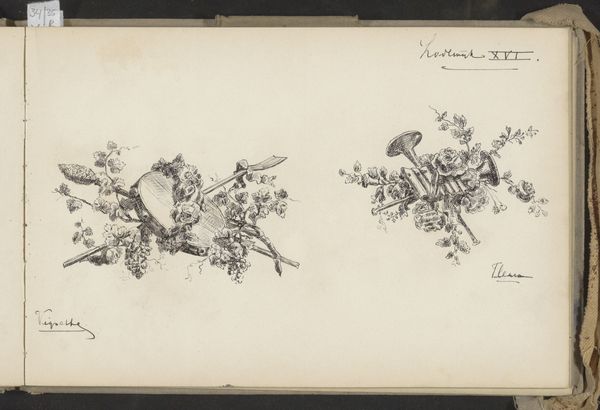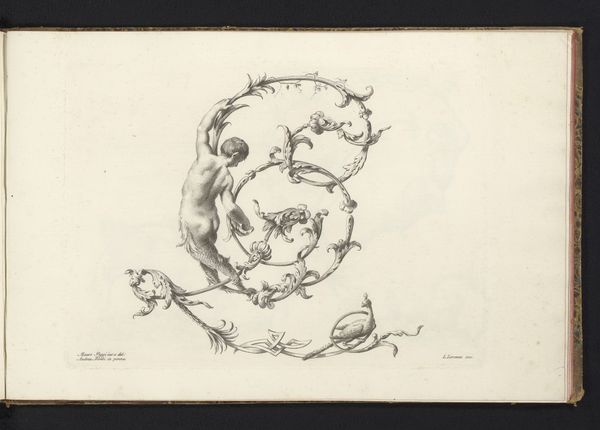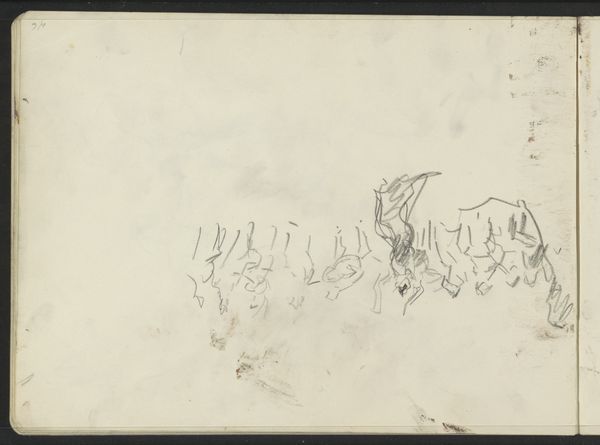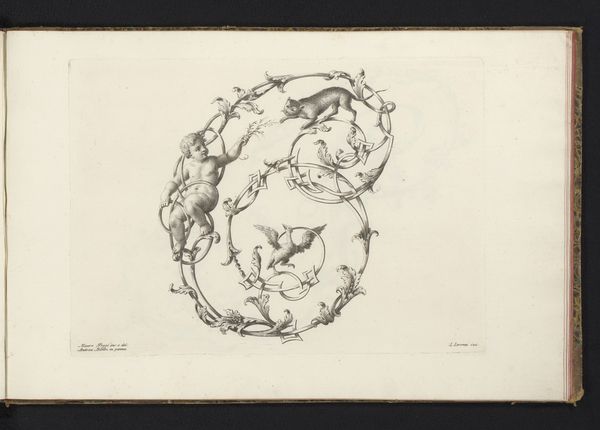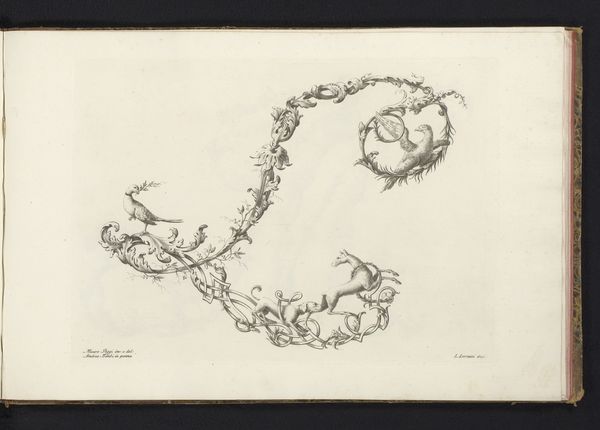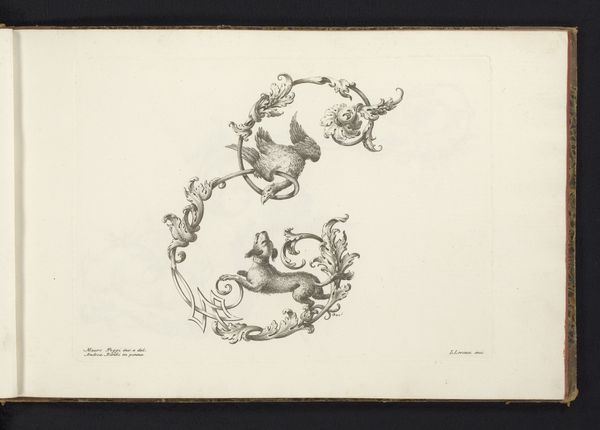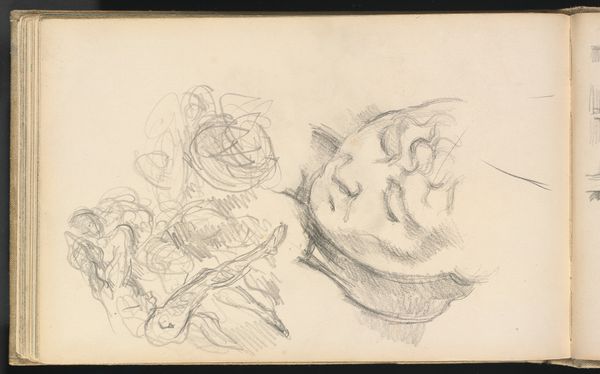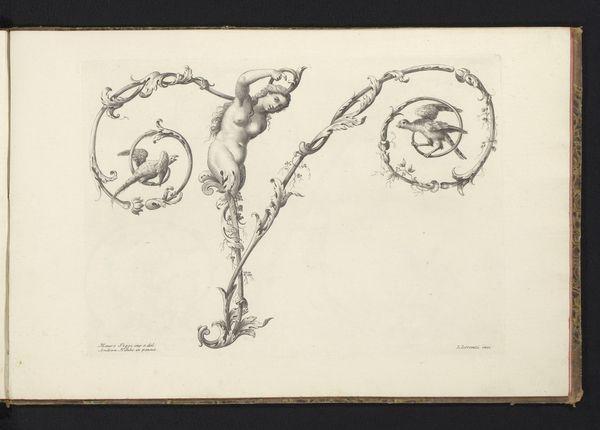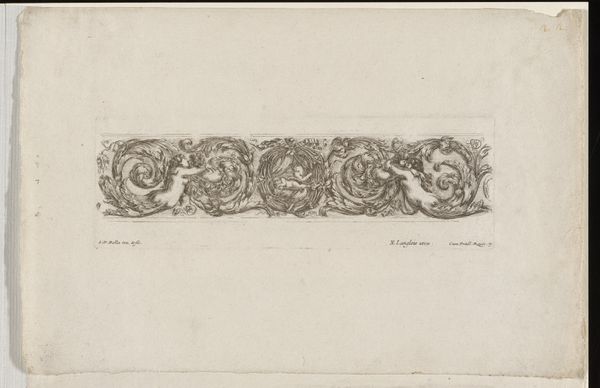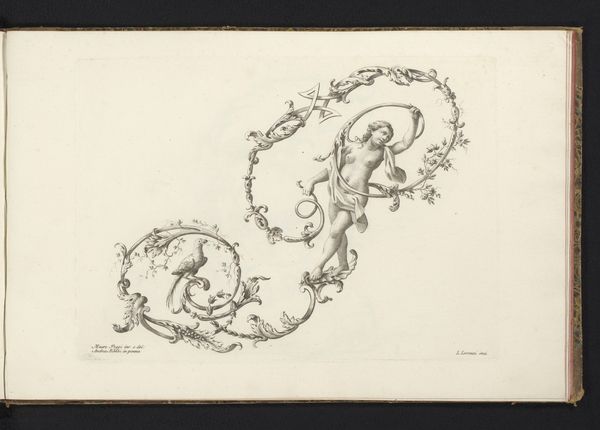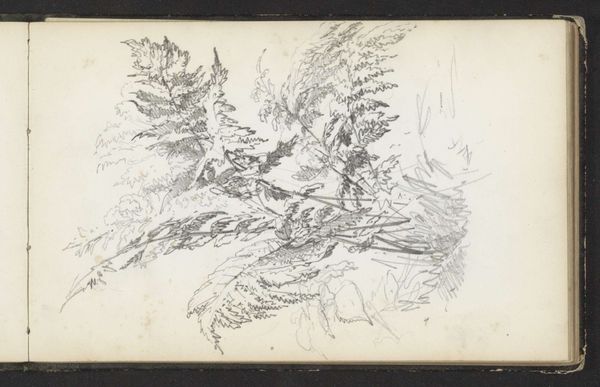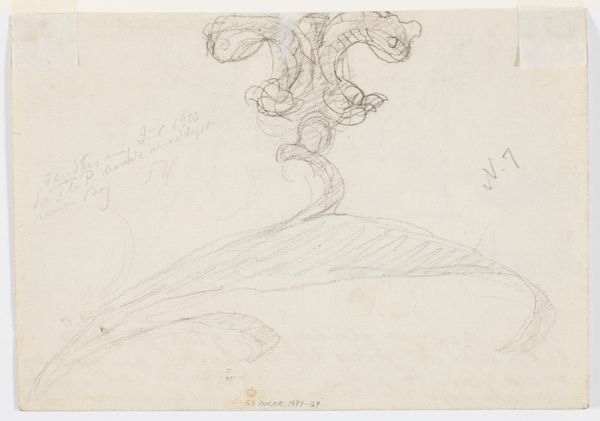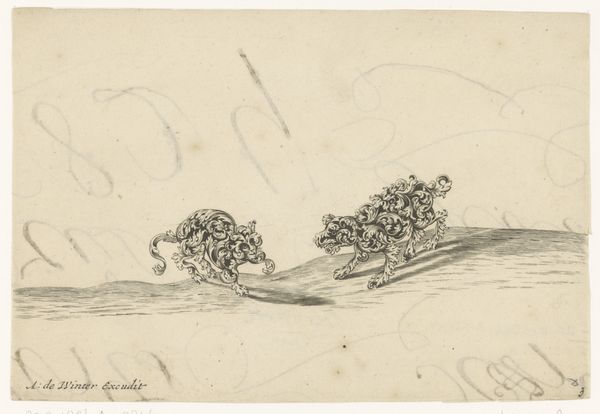
drawing, metal, ink, sculpture
#
drawing
#
metal
#
ink
#
sculpture
Copyright: Rijks Museum: Open Domain
Editor: So, here we have "Sculpted Garland from the Palace on the Dam," a drawing made with ink and possibly metal, sometime between 1890 and 1922. The incredible detail gives it a somewhat eerie quality. What's your perspective on this? Curator: Well, considering the time and context, I see a potent commentary on labor and consumption. This meticulously rendered garland, likely intended for opulent display, reflects a society grappling with industrialization and its impact on traditional crafts. The sheer detail speaks to hours of labor – we need to think about the class implications, the act of drawing as a skilled, trained activity for someone serving the palace and its demands. What was the political mood, or the working conditions, at the time? Editor: I see your point. The ornate detail is a kind of excess, and thinking about who made it... It definitely brings new dimensions to the work. The material is interesting as well -- how would the political interpretation change if, say, we knew for sure the work was a drawing and sketch with graphite on regular paper versus the potential metal traces? Curator: Exactly! Knowing the materials shapes our understanding entirely. Graphite is one thing: inexpensive, erasable. Metalpoint is an older technology involving silverpoint for subtle shades - a totally different labor value is applied to those specific decisions in materials as a political choice. How are notions of "high art" like sculpture intertwined here, if it's simply a sketch? The intention to eventually *sculpt* may carry political significance too. Editor: It’s almost like the drawing itself is a record of production, not just a piece of art. Thank you, that definitely sheds a new light on what I was originally seeing! Curator: Precisely! By focusing on production and labor we discover fresh ways of relating to art.
Comments
No comments
Be the first to comment and join the conversation on the ultimate creative platform.
